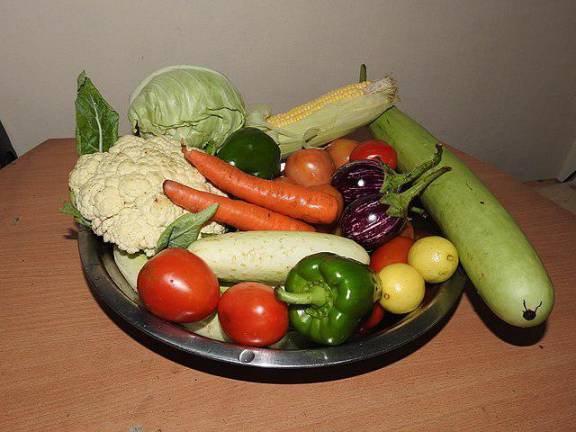In the New Food Order, Eating Veggies First Takes on New Urgency
It is not just important that you round out your diet with healthy portions of vegetables, it is also important that you dig into the veggies before the other foods on your plate, experts now say. A trend that started in Europe and Asia could soon be getting the official embrace by the USDA.

Your mom probably always urged you to: “Eat your veggies.” Food researcher Domenico Tricò at the University of Pisa’s is even more urgent. He says when it comes to the vegetables on your dinner plate: “Eat them first.”
He’s not alone. Turns out a whole bunch of new studies show that the order in which you eat your veggies is as important as what you eat. The name for this new idea is food order or meal sequencing.
The data suggest that beginning your meal with your veggies followed by protein and fatty foods while pushing carbs such as rice, bread, and pasta to the end seems to slow down digestion.
That helps regulate the level of sugar circulating in your blood. Better yet, it stimulates the production of GLP-1, a hormone released by your body that makes you feel full so you don’t over eat. (For the record, GLP-1 is the hormone the new weight-loss and diabetes drugs Ozempic and Wegovy are designed to mimic that make you feel full.)
So how to line up the food on your plate? Instead of reaching for the bread and rolls, start with a salad as Tricò has undoubtedly been doing in Italy for years. Then move on to the protein.
One small study in medical journal Clinical Nutrition showed that when people served chicken and rice ate the chicken first, their blood sugar level stayed level and they felt fuller. Notice, though, that they did get to enjoy that rice. Potatoes, too, and those rolls they passed on, so long as they didn’t eat them “naked” meaning no protein fat or fiber. In other words, skip toast with jelly or plain crackers opting instead for toast with peanut butter and crackers dipped into, say, hummus or guacamole.
Tricò says this particular strategy is “typically well accepted,” which is why he recommends it to his patients with diabetes. Ditto for National University of Singapore biochemist Christiani Jeyakumar Henry who told The Washington Post that eating vegetables before refined carbs may be a useful strategy in countries such as Japan where the number of people with diabetes is increasing and rice is a staple. He’s got numbers to prove the point: One study there found that people with Type 2 diabetes who ate their veggies first at every meal for a full two years had better long-term blood sugar control that those in a control group who didn’t do the veggie thing.
Here at home, the Feds are expected to jump on the band wagon in the near future. The next issue of the Dietary Guidelines for Americans, due in 2025, will examine “food pattern modeling,” a term USDA defines as “methodology used to illustrate how changes to the amounts or types of foods and beverages in a dietary pattern might affect meeting nutrient needs.” Translation: They plan to figure out how to update and adapt healthful regimens such as the ever-popular Mediterranean Diet with info from multiple reviews plus facts on personal food preferences, allergies, and cultural norms that “better reflect intake variability and the range of possible healthful diets based on our diverse populations.”
Easier said than done, of course.
But a tasty challenge to be sure.